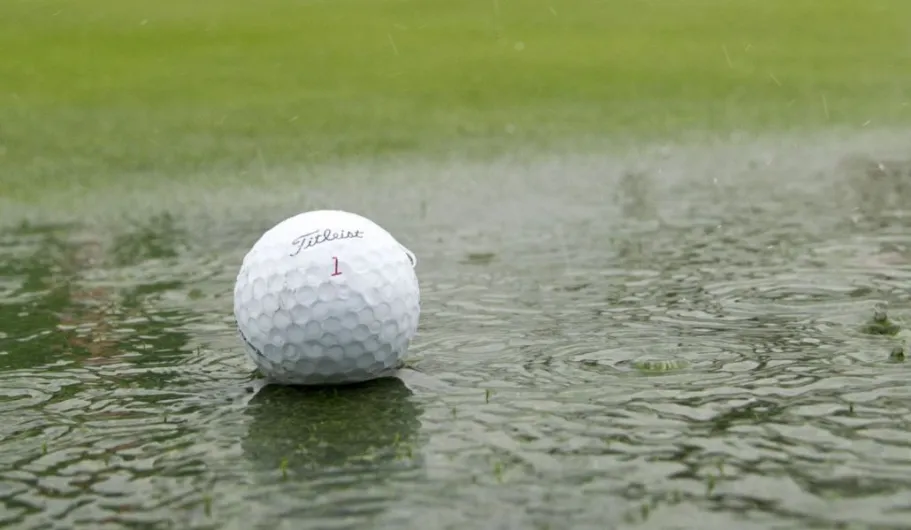Trials of a Challenging Season

GCSANJ COMMENTARY by Maureen Sharples, GCSANJ Executive Director
New Jersey golf courses have faced one of the most challenging seasons to date. Extended winter weather followed by relentless rain and stretches of extreme heat have wreaked havoc on the playability, overall aesthetics, and budgets of courses. New Jersey experienced its second warmest August and 15th warmest July since 1895. July and August also had above average precipitation (11.61 inches) throughout the state, with a wide range of monthly totals. Serious flash flooding occurred in many locations throughout the state. To make matters worse, the New Brunswick weather station is currently reporting 7.05” of rain for September, again well-above average. Golf courses throughout the state and region have experienced widespread and persistent ponding of water on playing surfaces, turf loss, damaged bunkers, and slow putting greens.
Moreover, some superintendents were still cleaning up from the three nor’easters that pounded New Jersey in March causing extensive clean-up of tree damage and debris when many courses were scheduled to open.
As a result, golf course superintendents have had limited opportunity to recover from these extreme weather conditions and their knowledge and state-of-the-art practices have been no match for Mother Nature. Too often, there was nowhere for the water to go and standing water or saturated ground during hot and humid weather resulted in extensive and irreversible turf damage.
The saturated ground has also prevented crews from completing the most basic of maintenance procedures – mowing and spraying – for fear of equipment damaging the turf. Forced into infrequent mowing and rolling, putting greens have typically played slower than normal. For those that attempted to mow or roll, equipment damage to the turf created the situation of “damned if you do – damned if you don’t”.
Weather related turf loss made way for weeds and the hot humid temperatures encouraged diseases and added stress to the already weakened plant. In fact, due to the extreme weather, diseases like Pythium blight, summer patch, and gray leaf spot were more severe this summer then they have been in decades. In addition, pre-emergence herbicide treatments applied in the spring to control weeds were ineffective due to the extreme rainfall followed by the excessive heat. With heavy rainfall and high temperatures, it was difficult if not impossible to make follow-up post-emergence applications in time for optimal weed control. Thus, weed pressure has been intense this year.
It’s easy to understand damage to golf courses caused by intense, named storms incessantly covered on the weather channel. But no one should underestimate the severity of the cumulative damage on golf courses that has built up gradually from one bad weather pattern after another over this entire year. Superintendents have faced extraordinarily difficult conditions throughout the year and the short periods when the weather has cleared has not been enough time to catch-up or recover.
Patience and time are needed for New Jersey golf courses to heal and recover from this brutal year. Turf professionals strive to create the best playing conditions possible. Hopefully, cooler and drier weather during fall will provide superintendents the opportunity and time needed to start the recovery process.
Thankfully, New Jersey is home to a bounty of resources including the outstanding members of the Golf Course Superintendents Association of New Jersey, renowned Rutgers Center for Turfgrass Science and USGA. With research supported by the GCSANJ and the help of our industry leaders, superintendents can transform these challenges into a learning opportunity in turn helping them adapt in the future. Just like the weather is constantly changing so must turf professionals in their efforts to provide the best possible product.
Rutgers Turfgrass Specialists:
Dr. Bruce Clarke
Dr. James Murphy
Dr. Matthew Elmore
Dr. Albrecht Koppenhöfer
Link to PDF Format: https://files.constantcontact.com/18b72838001/b1b9eaca-547c-44d5-973a-8083cd787f90.pdf
Supporting Links from USGA and Rutgers
http://www.usga.org/content/usga/home-page/course-care/regional-
updates/northeast-region/2018/when-s-it-gonna-end-.html
http://www.usga.org/content/usga/home-page/course-care/regional-updates/northeast-region/2018/the-costs-of-a-wet-summer.html
https://turfblog.rutgers.edu/?p=1168
https://www.njweather.org/content/summer-personified-july-2018-recap
https://www.njweather.org/content/lion-roared-all-month-long-march-2018-summary
